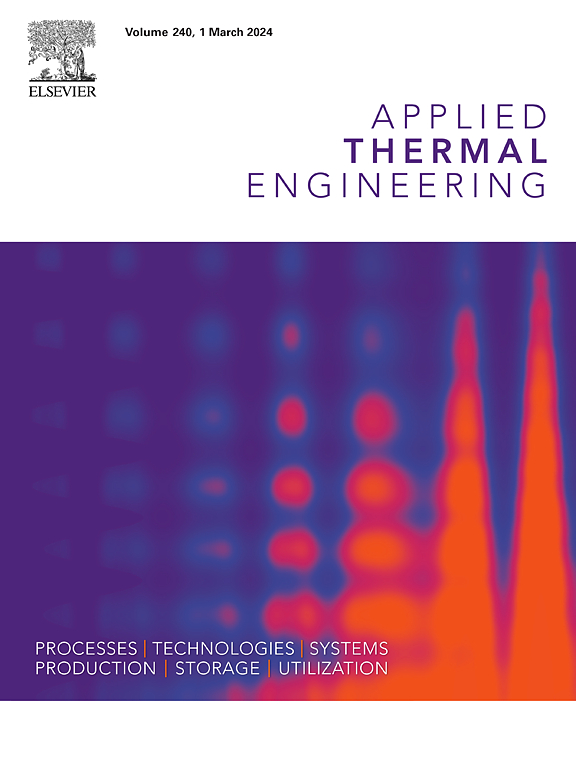Enhancing thermal management in concentrated photovoltaic cells using supercritical carbon dioxide
IF 6.1
2区 工程技术
Q2 ENERGY & FUELS
引用次数: 0
Abstract
A key challenge for liquid-based cooling in concentrated photovoltaic systems is the significant rise in coolant temperature along the flow path, which degrades thermal performance and increases temperature non-uniformity. This study introduces supercritical carbon dioxide as a novel coolant for concentrated photovoltaic systems and compares its thermal performance with that of water under varying operating conditions. The cooling system incorporates a heat sink with four different channel sizes, assessed under medium, high, and ultrahigh concentration ratios. The results indicate that the supercritical carbon dioxide-based system outperforms the water-based system at medium concentration ratios, with greater benefits in smaller channels under high and ultrahigh concentration ratios. Furthermore, the hydraulic performance of the supercritical carbon dioxide-based system improves significantly in smaller channels. The supercritical carbon dioxide-based system lowers cell temperature and improves uniformity, reducing the maximum cell temperature by 4.3 K and temperature difference from 6.4 K to 2.6 K at high concentration ratios. At ultrahigh concentration ratios, smaller channels further enhance performance by increasing heat rejection per unit pumping power. In conclusion, considering the need for effective cooling at high and ultrahigh concentration ratios, along with uniform and reduced cell temperatures and low pumping power, replacing conventional liquid-based systems with supercritical carbon dioxide-based units offers notable efficiency advantages for next-generation concentrated photovoltaic systems.
利用超临界二氧化碳加强聚光光伏电池的热管理
聚光光伏系统的液体冷却面临的一个关键挑战是冷却剂沿流道的温度显著升高,这会降低热性能并增加温度不均匀性。本研究介绍了超临界二氧化碳作为聚光光伏系统的新型冷却剂,并比较了其在不同运行条件下与水的热性能。冷却系统包含一个散热器,有四种不同的通道尺寸,在中等、高和超高浓度比下进行评估。结果表明,超临界二氧化碳基体系在中等浓度比下优于水基体系,在高浓度和超高浓度比下,在较小的通道中具有更大的效益。此外,超临界二氧化碳基系统的水力性能在较小的通道中显著提高。超临界二氧化碳基体系降低了电池温度,提高了均匀性,在高浓度比下,电池最高温度降低了4.3 K,温差从6.4 K降低到2.6 K。在超高浓度比下,更小的通道通过增加单位泵送功率的散热进一步提高了性能。综上所述,考虑到在高浓度和超高浓度比下对有效冷却的需求,以及均匀和降低的电池温度和低泵浦功率,用超临界二氧化碳基装置取代传统的液体基系统为下一代聚光光伏系统提供了显着的效率优势。
本文章由计算机程序翻译,如有差异,请以英文原文为准。
求助全文
约1分钟内获得全文
求助全文
来源期刊

Applied Thermal Engineering
工程技术-工程:机械
CiteScore
11.30
自引率
15.60%
发文量
1474
审稿时长
57 days
期刊介绍:
Applied Thermal Engineering disseminates novel research related to the design, development and demonstration of components, devices, equipment, technologies and systems involving thermal processes for the production, storage, utilization and conservation of energy, with a focus on engineering application.
The journal publishes high-quality and high-impact Original Research Articles, Review Articles, Short Communications and Letters to the Editor on cutting-edge innovations in research, and recent advances or issues of interest to the thermal engineering community.
 求助内容:
求助内容: 应助结果提醒方式:
应助结果提醒方式:


